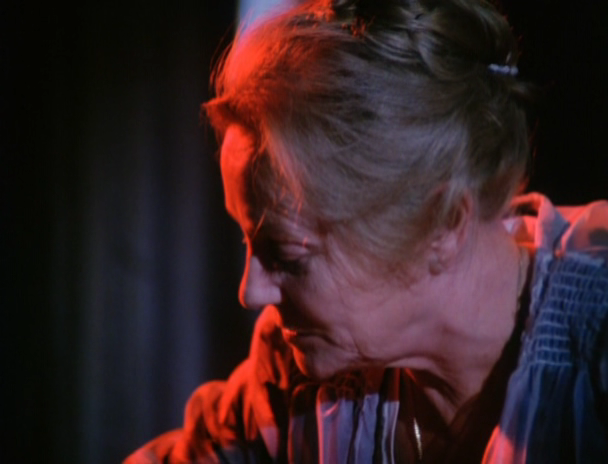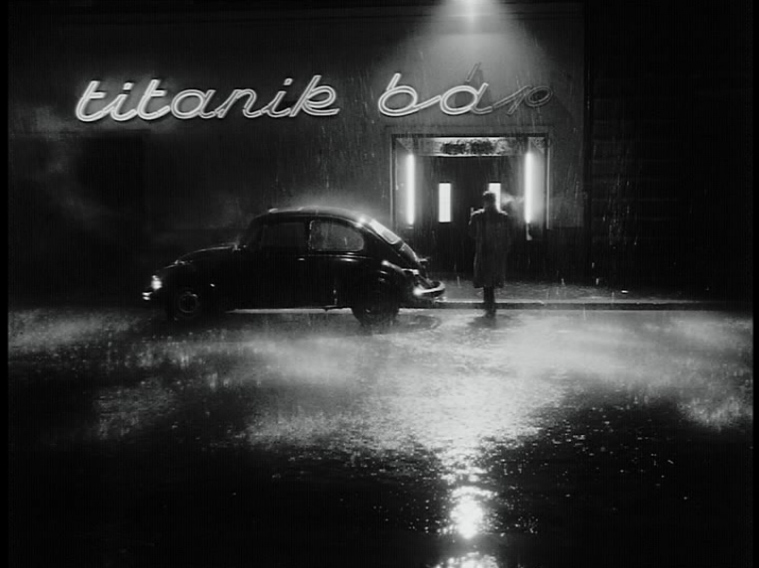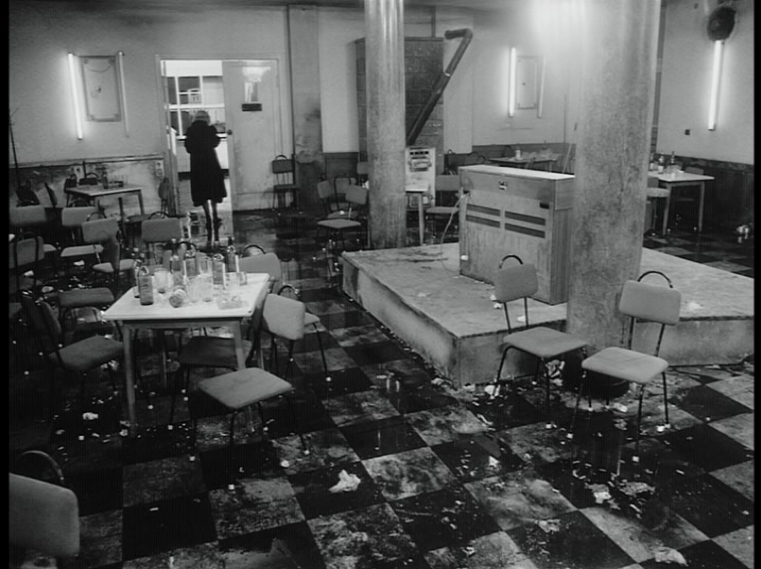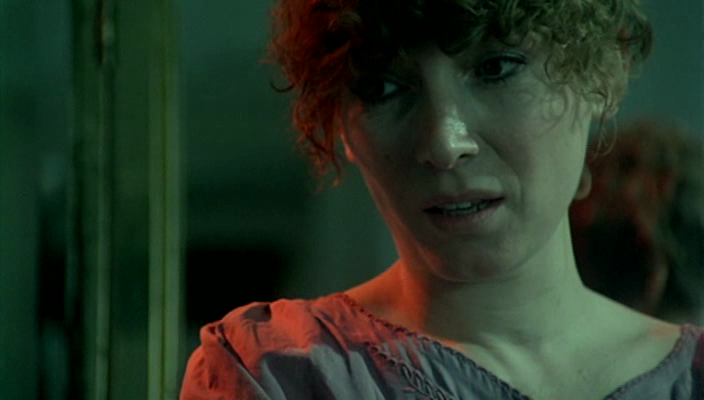From the Chicago Reader (May 25, 1990). This is also reprinted in my first collection, Placing Movies: The Practice of Film Criticism. — J.R.
ALMANAC OF FALL
*** (A must-see)
Directed and written by Bela Tarr
With Hedi Temessy, Erika Bodnar, Miklos B. Szekely, Pal Hetenyi, and Janos Derzsi.
1. Problems
One reason that Eastern European films often don’t get the attention they deserve in the West is that we lack the cultural and historical contexts for them. If Eastern Europe’s recent social and political upheavals took most of the world by surprise, this was because most of us have been denied the opportunity to see the continuity behind them: they seemed to spring out of nowhere. The best Eastern European films tend to catch us off guard in the same way, and for similar reasons.
My own knowledge of Hungarian cinema is spotty at best, despite the fact that, according to David Cook in A History of Narrative Film, the Hungarians “seem to have identified film as an art form before any other nationality in the world, including the French.” (One of the first major film theorists, Bela Balazs, was Hungarian, and a contemporary film studio in Budapest is named after him.) Among the pioneers were Mihaly Kertesz and Endre Toth, who emigrated to the U.S. and became known as Michael Curtiz and André de Toth. Paul Fejos (1897-1963) was one of the great filmmakers of the late silent and early sound periods, a shamefully neglected figure who made films all over the world — as a Hollywood director (Lonesome, The Last Performance, Broadway), as a restless European independent (Fantomas, Sonnenstrahl), and finally as an anthropologist in Madagascar, the East Indies, Siam (A Handful of Rice), and Peru. Yet only one of his Hungarian films, Tavaszi Zapor (1932), appears to have survived, and it can be seen only in Europe, although it is one of the supreme masterpieces of world cinema.
Otherwise, I have seen several pictures by Miklos Jancso (a major figure in the 60s and 70s for such films as The Red and the White and Red Psalm, but someone whose films are no longer distributed in the U.S.), and the odd film or two by Istvan Szabo (Confidence), Marta Meszaros (Nine Months), Gyula Gazdag (A Hungarian Fairy Tale), the team of Istvan Darday and Gyorgyu Szalai (The Documentator), and others.
Last year, I was bowled over by my first encounter with Bela Tarr when I saw Damnation (1987), his fifth feature. And now that I’ve seen Almanac of Fall (1984), his fourth (showing this week at Facets Multimedia Center), I want to see his earlier features — Family Nest (1977), The Outsider (1980), and The Prefab People (1982). The fact that I lack a comprehensive Hungarian context in which to situate these films doesn’t create any serious obstacles to the great deal of pleasure Tarr’s movies provide. But this lack of expertise does usher in a whole set of potential problems when it comes to writing about Tarr’s work, and if I’m breaking with conventional critical etiquette in admitting to this anxiety here, it’s only because I think a related form of anxiety dissuades a good many viewers from seeing films as exciting as Damnation and Almanac of Fall. I believe that these problems are less serious than we tend to make them out to be; rather than pretend that they don’t exist, it seems more honest and useful to acknowledge them — in the process of showing how and why they don’t matter much.
Three problems should be broached right away: (1) I have no idea what the title Almanac of Fall means, or how it relates to the film; (2) I no longer remember the film’s opening quote from Alexander Pushkin, the relevance of which was also unclear; and (3) I’m not sure I understood all the dialogue, because some of the subtitles here (and in Damnation) are grammatically and/or typographically slipshod. All three problems have to do with linguistic uncertainty. The fact that I’ve searched the indexes of Cahiers du Cinéma and Sight and Sound in vain for any references to Tarr’s work creates an additional layer of uncertainty, although one that is surely connected to the linguistic and cultural uncertainties of French and English film critics confronting the same work, many of whom would rather not see or write about films over which they feel no mastery.
The one piece of data I have at my disposal about Bela Tarr is an entry in a Hungarian film directory — an entry worth quoting for the information it imparts, though it raises some of the same linguistic and cultural uncertainties cited above. After telling us that Tarr was born in 1955, the entry goes on to say, “He started making amateur films at the age of 16. In the meantime he was a laborer, the caretaker at a House for Culture and Recreation, and a free-lance intellectual. It was through his activities as an amateur film maker that he came into contact with the Bela Balazs Studio of which he became a member and that is where he made Family Nest for which he won the Grand Prix (shared) at the Mannheim Festival. Afterwards, in 1977, he became a student at the Academy for Theatre and Film Art. It was while he was still a student that he was given an opportunity to make his next film The Outsider which was also made with the methods of the ‘Budapest School’ as was his first film. He graduated in 1981 and made his film The Prefab People where the lead roles were played by film actors and actresses but the method was a repetition of his previous films.”
Apart from its awkward and vague English, this entry raises such questions as: What is a House for Culture and Recreation? What is a free-lance intellectual? What is the Budapest School, and what are its methods? And if the lead roles of his third feature were played by “film actors and actresses,” who played the lead roles in the first two? (We may deduce that Tarr went from using nonprofessional actors to professionals, but can we be absolutely sure?)
2. Solutions
The plot and characters of Almanac of Fall are crystal clear. All of the action takes place in the roomy apartment of Hedi (Hedi Temessy), an elderly woman who lives with her son Janos (Janos Derzsi) and her nurse Anna (Erika Bodnar). A recent addition to the household is Miklos (Miklos B. Szekely), Anna’s lover; another recent addition is Pal (Pal Hetenyi), Janos’s former and now unemployed schoolmaster, who moves in at Janos’s insistence.
The main issue for all five characters is money, which Hedi has and the other four characters want. The relations between them are often edgy and quarrelsome and at times even violent, although at the outset, Anna gets along quite well with Hedi, serving as a friend as well as a nurse. The action proceeds mainly through a series of dialogues between two characters at a time, in or between various rooms, during which they either form temporary alliances or engage in conflicts: Anna speaks to Miklos in their bedroom, Hedi and Janos quarrel about money in the living room, Anna in the kitchen addresses Hedi in the bathroom, and so on.
Over the course of the film, Anna sleeps with all three men, and Pal, desperate to pay back a loan, steals and pawns Hedi’s gold bracelet, an act that eventually unites the other four characters against him. Most of the time, each character seems to be acting on his or her own behalf, conspiring against the others; the emotional climate is Strindbergian, reflecting a continual series of power struggles, and it suggests at times the films of John Cassavetes in its intensity. The amount of time that passes over the course of the film is somewhat ambiguous; scenes usually follow one another abruptly, without much sense of how much time has passed between them.
The writing and acting are sufficiently controlled and effective to give this story a strong dramatic appeal, but what gives the film its greatest interest is Tarr’s elaborately choreographed mise en scène: he treats every scene as an individually shaped and sculpted set piece. This is also the case in Damnation, where the plot is much more minimal (a recluse in love with a singer gets her husband involved in a smuggling scheme so that he can spend time with her), and the mise en scène is more systematically blocked out and structured in lengthy takes. The two films are quite different in other respects. Damnation is in black and white and steeped in gloomy atmospherics (in exterior shots rain, fog, mud, and stray dogs, and in interiors lots of murk and decay). Almanac of Fall is in color and has the dramatic economy of a tightly scripted play. But the two films have one striking thing in common: the story and the mise en scène are constructed in counterpoint to one another, like the separate melodic lines in a fugue.
In Damnation, this sometimes has the effect of making the story seem an afterthought, or at least a secondary element. A very slow camera movement proceeds through a given setting for no apparent reason apart from conjuring up a mood and creating a powerful sensation of formal suspense, similar to the look and effect of such camera movements in Tarkovsky films like Solaris and Stalker; then, toward the end of the sequence, something will appear in the shot or on the sound track that will retroactively connect this scene with the preceding story. The mise en scène in Almanac of Fall, by contrast, is rarely used to suspend our perception of the plot; but it frequently has the effect of following a distinct agenda of its own. Another way of describing this process would be to say that in conventional movies, the action usually represents a precise congruence between what the characters do and what the camera does; in Damnation and Almanac of Fall, where the congruence is not precise, the “action” consists of what the characters and the camera do in relation to one another — creating a set of shifting power relationships every bit as intricate as the shifting power relationships between the characters.
One of the most beautiful aspects of Tarr’s mise en scène is a recurring lighting scheme: most areas in a given shot are divided between blue gray and orange red, isolating the characters from one another in the process. There doesn’t appear to be anything systematic or programmatic about the color coding of various characters and spaces; it differs from scene to scene (Bela Tarr is much more of an artist than Peter Greenaway), and its use is much too varied and expressive to register as a simple manneristic device. (Although the lighting is usually plotted in relation to the actors, the division of colors isn’t absolute; a character bathed in blue light might be outlined in orange, for instance.)
Some of the unorthodox camera angles, like those of Raul Ruiz, provide disturbingly uncanny and nonhuman vantage points on the action: in some scenes in the bathroom, the camera peers down at the characters from a point somewhere near the ceiling, and in one startling and violent scene in the kitchen, the wide-angle camera peers up at them through a transparent floor. (Because the camera is some distance below the floor, the characters seem to be floating eerily in midair, like astronauts frozen in free-fall.) More often, the camera frames the actors at eye level from a certain distance while moving slowly past or around them — glimpsing them from outside the apartment through a succession of windows, or gliding between them so that their relationships to each other and to the frame are in continual flux. Reflections in mirrors and in other kinds of glass are often ingeniously incorporated; a dialogue between Janos and Miklos is framed in such a way that, thanks to double reflections, they appear to be simultaneously facing and looking away from each other, so that we get the equivalent of both an angle and its reverse angle within the same shot.
Some of the elaborate staging helps alert us to the characters’ hidden agendas and duplicitous motives, almost as if the camera were whispering to us about the scene, adding to the overall paranoid and conspiratorial atmosphere. But at other times this mise en scène seems to express a certain detachment toward the characters that borders on contempt or indifference — it pursues a distracted path of its own that has little to do with them. This is especially true in the final sequence, when the camera, moving around a festive banquet to the strains of a Hungarian version of “Que sera, sera,” is only intermittently attentive to what the characters are doing.
Here, as in Damnation, Tarr’s approach ultimately becomes a set of strategies for creating or locating various kinds of movement within stasis, and freedom within confinement. Should his approach be read in political and allegorical terms, as a direct or indirect statement about the rigidity of life under Hungarian communism? Certainly it can be read that way — a veritable cottage industry has grown up out of interpreting the elaborate camera movements in Jancso’s films in an analogous fashion. But applying this interpretation to Damnation and Almanac of Fall as a literal skeleton key to their meanings seems both facile and needlessly simplistic. It’s part of these films’ beauty and fascination that they don’t have to be read this way in order for them to breathe, function, and speak to us. (All American films are about America — and a strict ideological reading might say that they’re all about capitalism, too — but it’s surely reductive to limit the range of their meanings to this notion.) With or without the Hungarian context, Almanac of Fall is a riveting experience.









